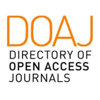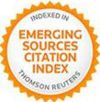Abstract
Keywords
Full Text:
PDFDOI: http://dx.doi.org/10.2423/i22394303v9n1p21
References
Bauer, R. (1966). Social Indicators. Cambridge, Massachusetts, MA: MIT Press.
Brandi, C. (1996). Theory of Restoration. In Price, N. S., Talley Jr, M. K. & Vaccaro, A. M. (Eds) (1996) Historical and Philosophical Issues in the Conservation of Cultural Heritage, Los Angeles, CA: Getty Conservation Institute.
Brandt-Grau, A., Busquin, P., Clausse, G., Gustafsson, C., Kolar, J., Smith, B., Spek, T., Thurley, S., & Tufano, F. (2015). Getting cultural heritage to work for Europe - H2020 Expert Group in Cultural heritage - Final Report. Brussels: European Commission.
Capello, R., & Kroll, H. (2016). From theory to practice in smart specialization strategy: emerging limits and possible future trajectories, European Planning Studies, 24(8), 13-93.
CHCFE Consortium (2015). Cultural Heritage counts for Europe. Retrieved from http://www.europanostra.org/our-work/policy/cultural-heritage-counts-europe/
Cooke, P., & De Propris, L. (2011). A policy agenda for EU smart growth: the role of creative and cultural industries, Policy Studies, 32(4), 365-375.
Douglas J. (2006). Building adaptation (2nd ed.). Woburn, U.K.: Butterworth-Heinemann.
European Commission (2014a). National/Regional Innovation Strategies for Smart Specialisation (RIS3). Cohesion Policy 2014-2020. Retrieved from https://ec.europa.eu/knowledge4policy/publication /nationalregional-innovation-strategies-smart-specialisation-ris3_en
European Commission (2014b). Towards an Integrated Approach to Cultural Heritage for Europe. Retrieved from http://ec.europa.eu/assets/eac/culture/library/publications/2014-heritage-com munication_en.pdf
European Commission (2018). New European Agenda for Culture. European Heritage Label (2017). 2017 Panel Report. Retrieved from https://ec.europa.eu/programmes/creative-europe/content/european-heritage-label-2017-panel-report_en
Feilden, B. M. (2003). Conservation of Historic Buildings. Third Edition. Oxford, Burlington, MA : Architectural Press.
Ferilli, G., Gustafsson, C., & Sacco, P. L. (2017). Cognitive Keynesianism: Heritage conservation as a platform structural anti-cyclic policy. The case of Halland Region, Sweden. Journal of Cultural Heritage 27(2017), 10-19.
Ferilli, G., Gustafsson, C., Buscema, M., & Sacco, P. L. (2019). The complex dynamic evolution of cultural vibrancy in the Region of Halland, Sweden. International Regional Science Review, 42(3-4), 1-44.
Flood, R (1999). Rethinking the Fifth Discipline: Learning within the Unknowable. New York, NY: Routledge.
Fusco Girard, L., Levent Baycan, T., & Nijkamp, P. (2011). Sustainable city and creativity: promoting creative urban initiatives. Farnham: Ashgate Publishers.
Fusco Girard, L., Forte, B., Carreta, M., De Toro, P., & Forte, F. (Eds) (2005). The Human Sustainable City. Challenges and Perspectives from the Habitat Agenda. Farnham: Ashgate Publishers.
Galison, P. (1997). Image & Logic: A Material Culture of Microphysics. Chicago, IL: University of Chicago Press.
Gustafsson, C. (2009). The Halland Model – A Trading Zone for Building Conservation in Concert with Labour Market Policy and the Construction Industry, Aiming at Regional Sustainable Development. Göteborg, Sweden: Chalmers University of Technology.
Gustafsson, C., & Lazzaro, E. (2017). Expert analysis of the Thematic Area of Culture, Cultural Heritage and Creative Industries to EIT’s Strategic Innovation Agenda. Budapest, Hungary: European Institute of Innovation and Technology, European Union.
Gustafsson, C., & Mellar, B (2018). Research for CULT Committee – Best practices in sustainable management and safeguarding of cultural heritage in the EU. Brussels: European Parliament, Policy department for Structural and Cohesion Policies.
ICOMOS (1964). International Charter for the Conservation and restoration of Monuments and Sites (The Venice Charter 1964). Retrieved from https://www.icomos.org/charters/venice_e.pdf 29 March 2017.
Janssen, J., Luiten, R., Renes, H., & Stegmeijer, E. (2017). Heritage as a sector, factor and vector: conceptualizing the shifting relationship between management and spatial planning. European Planning Studies, 2017, 25(9), 1654-1672.
KEA (2006). The Economy of Culture in Europe. Retrieved from http://ec.europa.eu/ assets/eac/culture/library/studies/cultural-economy_en.pdf
Lazzaro, E. (2019). Creative Industries. In: Bille, T., Mignosa, A., & Towse, R. (Eds), Teaching Cultural Economics, Teaching Economics series. Cheltenham, U.K.: Edward Elgar Publishing, (forthcoming).
Licciardi, G., & Amirtahmasebi, R. (Eds) (2012). The economics of uniqueness: investing in historic city cores and cultural heritage assets for sustainable development. Washington D.C.: The World Bank.
Lowenthal, D. (1985). The past is a foreign country. Cambridge: Cambridge University Press.
Muñoz Viñas, S., (2005). Contemporary Theory of Conservation. Oxford: Elsevier Butterworth-Heinemann.
Murzyn-Kupisz, M., & Dzialek, J. (2013). Cultural heritage in building and enhancing social capital. Journal of Cultural Heritage Management and Sustainable Development, 3(1), 35–54.
Nypan T., & Warr A. (2015). The Economic Taskforce. The Commission initiative for improved cultural statistics (ESS-net). Proceedings of 10th annual meeting of the European Heritage Heads Forum (EHHF). https://www.ehhf.eu/sites/default/files/Terje%20Nypan%20presentation.pdf
Ost, C. (2009). A guide for heritage economics in historic cities. Values, indicators, maps, and policies. Los Angeles, CA: Getty Conservation Institute.
Regeringens proposition 2016/2017:116. Kulturarvspolitik. Stockholm, Sweden: Regeringen.
Regeringskansliet (2015). En nationell strategi för regional hållbar tillväxt och attraktionskraft. Retrieved from https://www.regeringen.se/contentassets/98919a0ca0f1427491a3eef22a7d177c/en-nationell-strategi-for-hallbar-regional-tillvaxt-och-attraktionskraft-20152020.pdf
Rypkema, D. D. (1994). The Economics of Historic Preservation: A Community Leader’s Guide. Washington: Place Economics.
Sacco, P. L. (2011). Culture 3.0: A new perspective for the EU 2014-2020 structural funds programming. Retrieved from http://www.eenc.info/wp-content/uploads/2011/07/pl-sacco_culture-3-0_CCIs-Local-and-Regional-Development_final.pdf
Sacco, P. L., Ferilli, G., & Tavano Blessi. G. (2014). Understanding culture-led local development: A critique of alternative theoretical explanations. Urban Studies, 51(13), 2806-2821.
Sörlin, S., (2001). The Trading Zone between Articulation and Preservation: Production of Meaning in Landscape History and the Problems of Heritage-Decisions-making. In Baer, N. S., & Snickars, F. (Eds) Rational Decision-making in the Preservation of Cultural Property (pp. 47-60). Berlin, Germany: Dahlem University Press.
Stacy, R. D. (1992). Managing the Unknowable: Strategic Boundaries between order and chaos in organizations. San Francisco, CA: Jossey-Bass.
Stanojev, J., & Gustafsson, C. (2019a). Prioritizing Cultural Heritage through Smart Specialisation strategies – Boundaries and Perspectives Toward integrated Approaches (forthcoming)
Stanojev, J., & Gustafsson, C. (2019b) Circular Economy Concepts for Cultural Heritage Adaptive Reuse implemented through Smart Specialisations Strategies (in press)
Throsby, D. (2001). Economics and Culture. Cambridge: Cambridge University Press.
UNESCO (2013). Recommendations on Historic Urban Landscapes. Retrieved from https://whc.unesco.org/en/hul/
United Nations (2015). Sustainable Development Goals. Retrieved from https://www.un.org/ sustainabledevelopment/
United Nations (2017). New Urban Agenda. Retrieved from http://habitat3.org/wp-content/uploads/NUA-English.pdf
Article Metrics
Metrics powered by PLOS ALM
Refbacks
- There are currently no refbacks.
Copyright (c) 2019 Christer Gustafsson

This work is licensed under a Creative Commons Attribution-NonCommercial-NoDerivatives 4.0 International License.
SCIRES-IT, e-ISSN 2239-4303
Journal founded by Virginia Valzano





